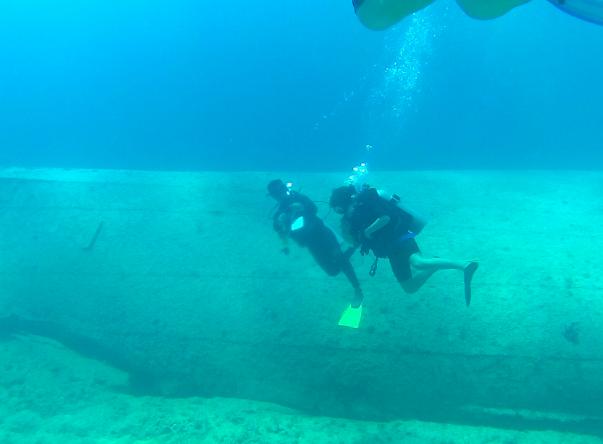Scuba Diving in Punta Cana
General Info
Diving Info
 Credit:
www.godominicanrepublic.com
Credit:
www.godominicanrepublic.com
When to Visit
Diving Conditions
Water temperatures range from 26° to 28° C/79°-83° F.
Currents on most dive sites in Punta Cana are minimal, but the eastern tip can pick up Atlantic currents which can provide good opportunities for drift diving.
You can expect average visibility of 15 meters/50 feet. During the warm months, visibility often reaches 30 meters/100 feet.
Types of Diving
Highlights
Astron Shipwreck
This former Russian cargo ship ran aground at Punta Cana during a storm in 1978. The 127-meter (417-foot) long ship now sits broken into two sections – the bow sits above the water while the stern is in 16 meters (52 feet) of water. The sheer magnitude of Astron, including its giant propeller, are worth a look.
Igneri Caribe Taino Underwater Museum
Located between the waters of Playa Blanca and Playa Serena, Punta Cana’s underwater museum consists of more than 20 sculptures depicting indigenous Taino people. The statues lie in just 3 to 7 meters/10-23 feet of water, depths ideal for divers of all levels. Corals were planted around the figures to provide home for the local fish.
El Niño
El Niño is famous for its great visibility, the abundance of tropical fish, and beautiful corals. Only 7 meters/20 feet deep, it’s one of the shallowest dive sites in the area. Nonetheless, it’s a great dive for the whole family.
Cuevitas
Cuevitas is one of the most impressive reefs in Punta Cana, and the reason for this is the eerie swim-throughs illuminated by the natural light from above the surface. This is another shallow area, with an average depth of about 11 meters/36 feet, making this spot suitable for all divers.
Batato
Batato features a series of coral reef passages, tunnels, and caves you can explore in just one dive. This and the abundance and variety of marine life which includes everything from small tropical fish to crustaceans and larger fish such as barracudas made this site attractive for underwater photography. A great location for divers of all levels.
Explore dive centers in the area

Punta Cana

Punta Cana

Bávaro
Passionate About Diving?
Explore a comprehensive dive map, track your dives, upload your dive logs, connect with your dive buddies or other divers from around the world, and more.